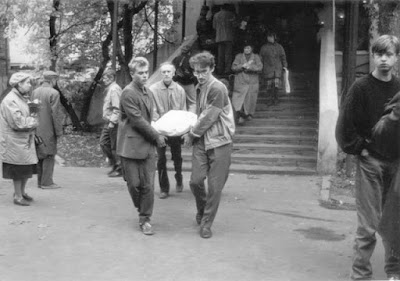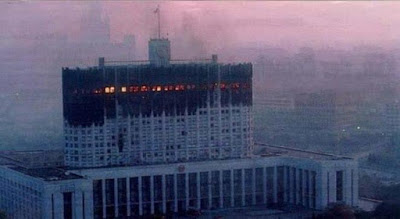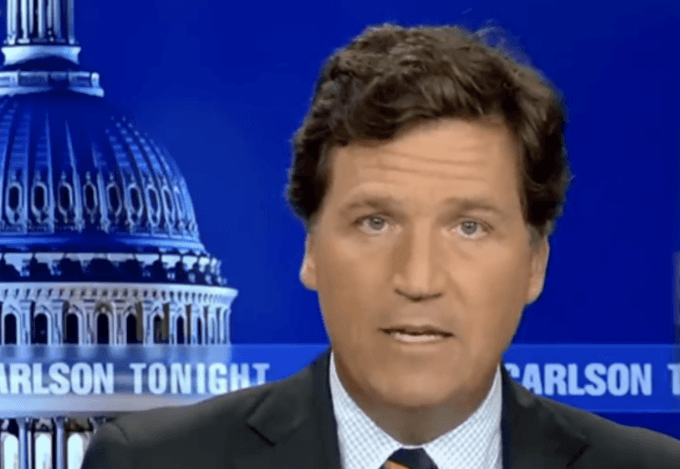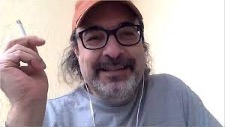NOVANEWS
By Kirill Vasilev
Unforgettable soldered blood
only this — a popular relationship —
promises the future any
renewal and celebration.
– Olga Bergholz
More than 10 years ago, on October 3-4, I first came to a rally in memory of those who are called “defenders of the House of Soviets” or “defenders of the Constitution,” although it is more correct, in my opinion, to speak of “participants in the popular uprising of 1993.”
In its objective class content, October 1993 was a belated reaction of the Soviet citizen to the bourgeois counter-revolution of Gorbachev-Yeltsin. It was the rising of proletarianized workers against the further capitalization of the country. We shouldn’t be misled by what support the insurgent Soviet worker, teacher, technician and professor had from various groups of the national bourgeoisie (“red directors,” part of the regional elites). By the autumn of 1993 there was no other real mass force that the leaders of the Supreme Soviet could call upon except those gathered outside the parliamentary palace. That’s why the leaders of the White House, reluctantly grinding their teeth, endured next to the “demon-possessed red-brown street.” It was much nicer to negotiate a “zero option,” to seek support from “patriotic businessmen” and rely on the mediation of the Moscow Patriarchate. More important is the point so often painfully spoken of by participants in these memorable events: even after the Ostankino slaughter, weapons available inside the House of Soviets were not distributed to its defenders. This fact sums up the class instincts of the fake popular leaders. Arming the workers was clearly not part of their plans. Even under threat of death, they realized that their “discretion” might be the ticket to a return to politics after all the storms.
That’s part of what happened. It’s no secret that no People’s Deputies were killed. Yes, some of them were beaten and abused by drunken riot police. Yes, the leadership of the House of Soviets spent a few months moved to “Lefortovo” [prison in Moscow]. But against the backdrop of hundreds of victims, all these privations look, to put it mildly, none too serious. Sometime later, the deputies returned to their benefits, and many of them have made successful careers in business and politics. A “rebellious past” did not prevent Alexander Rutskoi from becoming governor of the Kursk region, and Kirsan Ilyumzhinov and Ruslan Aushev were repeatedly re-elected presidents of their republics.
It is also significant that there is no movement for the memory of those nationalists who actually fell victim to the tragedy in October 1993. Coming to actions on October 3-4, one must involuntarily wonder: where is the once-formidable RNU, where are all these churches and fronts, which so vehemently denounced the “American-Zionists” 22 years ago and posed with a stylized swastika in front of enthusiastic pro-Kremlin media? Why is it the communist youth, who did not directly experience the tragedy of 1993, who come every year to the memorial marches carrying portraits of the fallen heroes, while their right-wing peers prefer to walk in “Russian marches” a month later? The answer is obvious. Despite all the ideological diversity on the barricades in October 1993, the popular uprising had, at its essence, an anti-capitalist content.
For me there is no question about whether to participate in the October events. It is neither a ritual nor a teary requiem. The only possible way forward is on the basis of this tradition. And we must bring the memory of those events to a new generation of fighters for a more just society.
Source
Translated by Greg Butterfield







